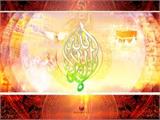09 Wandering in the Jiangnan Region: Thirty-six Realistic Accounts - Suzhou, Tiger Hill
April 16, 2009, Thursday: Qing dynasty court painter Xu Yang spent twenty-four years creating the 12-meter-long "Prosperous Scenes of Suzhou", which depicts the prosperous scenes from Mudu Town and Lingyan Mountain in Suzhou, through Pan Gate and Lu Gate, across the Shantang River to Huqiu. During the Spring and Autumn Period, King Helü of Wu ordered the construction of Helü City (now the old city of Suzhou), and the area around Huqiu was his palace in the suburbs!
At 13:06, the second mountain gate of Huqiu, the Broken Beam Hall. Huqiu Mountain used to be part of the outskirts of Suzhou. The people of Wu loved to go on outings and take boats along the Shantang River from Lu Gate to Huqiu. They preferred to dock their boats for entertainment rather than disembark and climb the mountain. One can imagine the bustling scene of the Shantang River when Bai Juyi served as the governor of Suzhou and had it dug!
Walking into the second mountain gate from the side, the plaque "Great Wu's Scenic Land" is prominently displayed above the door, proclaiming the long history of Wu culture. Looking further down the mountain path, Huqiu Pagoda stands centrally on a small hill, with an air of commanding strategic importance. As visitors ascend the slope, their steps become more solemn as they pay homage to the first scenic spot in Wu - Huqiu Pagoda. Ancient relics abound on both sides of the mountain path, including Hanhan Spring, Sword Testing Stone, Stone Pillow, and Zhenjun Tomb. Each scenic spot has a long history or a moving legend associated with it. The cultural heritage of our ancestors has been well preserved and passed down.
In ancient times, King Helü of Wu ordered Ganjiang and Moye to forge swords. After the swords were forged, they tested them by splitting stones. The huge stone was cleaved into two segments... thus forming today's Sword Testing Stone.
Not long after reaching the front of Huqiu Mountain, the rugged rocks and lush vegetation come into view. The four large characters "Huqiu Jianchi" (Tiger Hill Sword Pool) are carved on the stone wall, written by Yan Zhenqing of the Tang Dynasty. Entering through the moon-shaped door nearby leads to the Sword Pool. The surrounding stone walls are steep, and the pool emits a chilling aura. Historical records state that King Helü of Wu was buried at the bottom of the pool. Even Qin Shi Huang and Sun Quan once visited this place in search of his tomb.
The Sword Pool is deep and its spring water flows all year round... Although King Helü's tomb has been identified, it has not yet been excavated. Is the legendary Yu Chang Sword hidden in the tomb at the bottom of the pool? How many rare treasures are there? What secrets does the bottom of the Sword Pool hide? No one knows.
After passing the Sword Pool and ascending the mountain, the Huqiu Pagoda comes fully into view. This thousand-year-old pagoda was built at the end of the Five Dynasties and the beginning of the Northern Song Dynasty, also known as Yunyan Temple Pagoda. Upon closer inspection, the existing structure is primarily brick-based, bearing traces of weathering by wind and rain, with a noticeable tilt in the tower... The wooden structural corridor outside the tower has been completely destroyed.
Hangzhou West Lake's Leifeng Pagoda, together with Huqiu Pagoda, is known as the Two Ancient Pagodas of Jiangnan. Leifeng Pagoda collapsed long ago, but Huqiu Pagoda has withstood the vicissitudes of time and still stands strong, witnessing the storms and events of Suzhou over thousands of years, embodying the elegant culture of Suzhou!
After passing Huqiu Pagoda, we returned to the outside of the Sword Pool. Here, the terrain is flat, with two large protruding rocks called Qianren Stone. Its origin has several different accounts, none of which are supported by official historical records, only passed down through generations of local people, making it even more intriguing to discern what is true and what is false.
Huqiu encompasses an extremely rich Jiangnan culture: the pavilions and halls dotted among the mountains each have their own charm; the independent courtyards and villas each have their own subtleties.
Countless talented scholars and emperors have enjoyed the spring flowers and autumn moons on Huqiu Mountain, leaving behind countless masterpieces of calligraphy. The poetic and picturesque Jiangnan region has an aesthetic quality that transcends utilitarianism and a poetic spirit that surpasses worldly concerns, truly being the spiritual homeland most easily intoxicating to ancient Chinese literati...
After viewing the bonsai at Wanjing Villa on the west mountain of Huqiu, we walked towards the mountain gate. This visit covered less than one-third of the entire scenic area. According to my usual habits, I would never leave like this.
However, I have gradually become accustomed to taking and letting go, as the cultural connotations of the scenery are interconnected. If the heart can grasp the essence, then the surface details are no longer important!
At 14:15, the first mountain gate of Huqiu Mountain (north bank of the Shantang River). The imperial inscription "Hufu Chan Temple" by Emperor Kangxi, he and his grandson Emperor Qianlong, these two Manchu emperors, had a lifelong love for Jiangnan. They made indelible contributions to the prosperity of Jiangnan culture! Perhaps this is because the depth of Jiangnan culture is too profound to conquer, so it must be nurtured instead...
To be continued, more pictures are stored in the space album...
Related thematic articles: I can only accompany you to look at the moon, I cannot take you to fly up to heaven!



